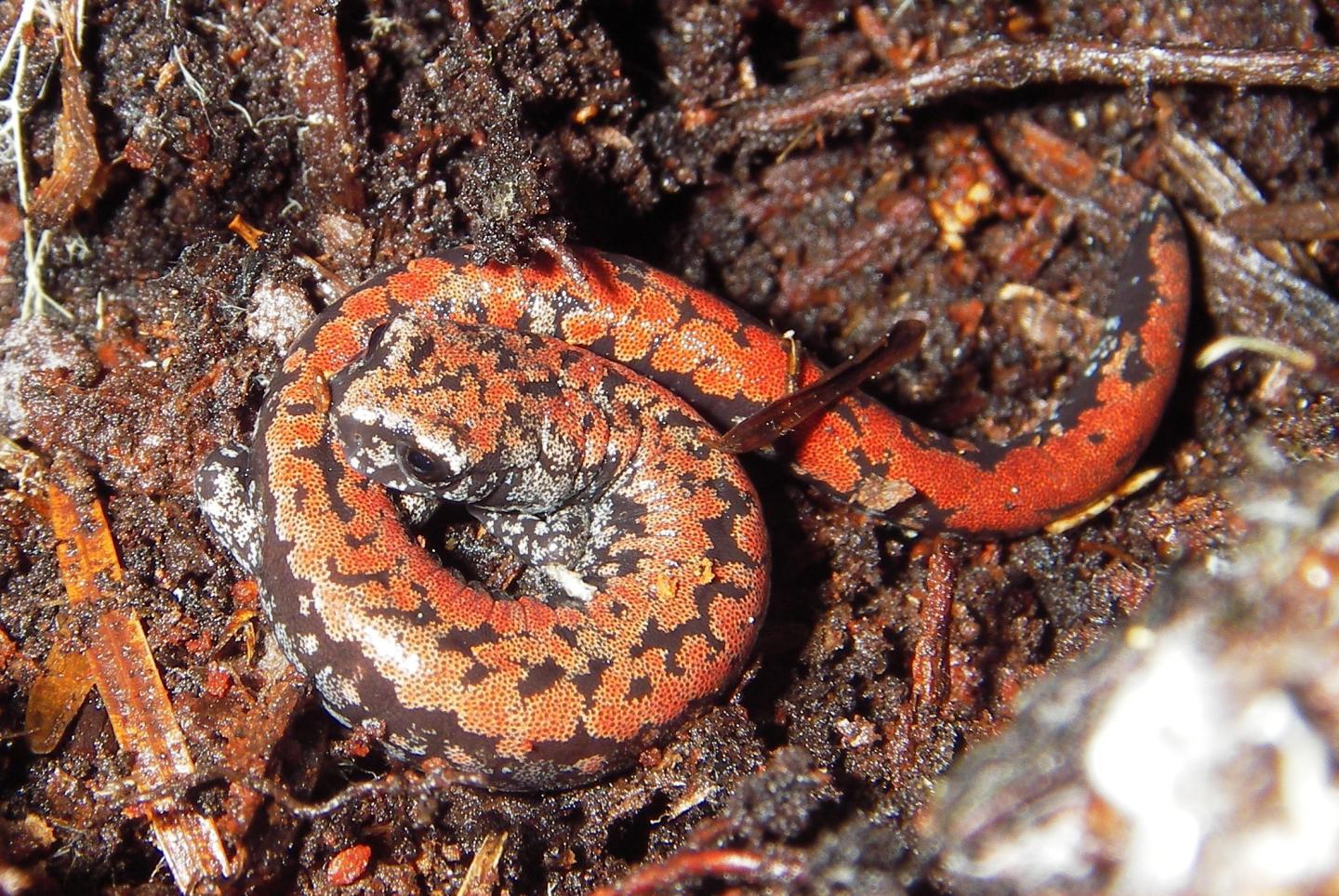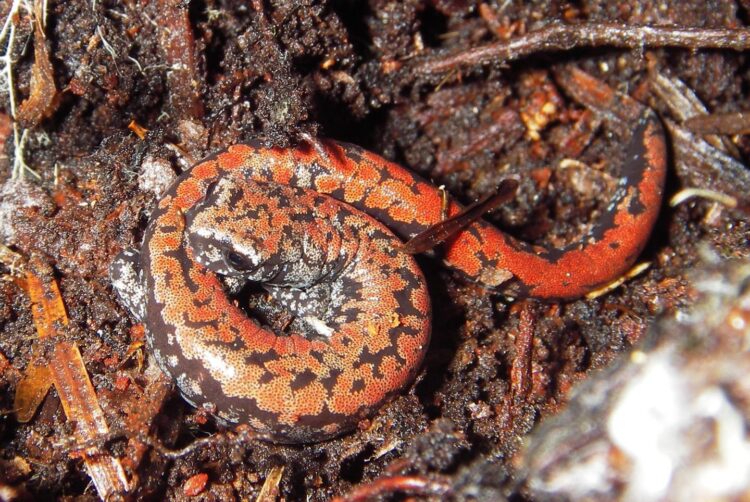
Credit: Tiffany Garcia, Oregon State University
CORVALLIS, Ore. – A seven-year field experiment on 88 tree stands across Oregon’s western Cascade Range found no discernable difference in the abundance and occupancy rates of rare Oregon slender salamanders on recently harvested tree stands – clear-cuts – compared to stands late in the harvest rotation – older than 50 years.
The findings are published in the journal Forest Ecology and Management. The project was a collaboration of Oregon State University, Weyerhaeuser, Port Blakely Tree Farms, Bureau of Land Management and the Oregon Department of Forestry.
To their surprise, the researchers found that a different, more commonly found terrestrial salamander, the Ensatina, was negatively affected by timber harvest. The study emphasizes, however, the importance of downed wood in the detection of both species. When there is dead wood on the ground, there are more Oregon slender and Ensatina salamanders, regardless of harvest stage.
The Oregon slender salamander only exists on the western slopes of the Cascades, where it lives most of the year underground or burrowed in woody debris on the forest floor. This fully terrestrial salamander is primarily found in mature evergreen forests, including timber plantations.
Due to concern over the effects of harvesting trees, the Oregon slender salamander is considered “sensitive” by the state of Oregon and has been petitioned for Endangered Species Act candidacy.
The study comes with a recommendation from the researchers: After harvest, leave downed wood behind to provide adequate habitat for the salamander.
“That dead, decaying wood is essential habitat for maintaining the moisture and temperature salamanders need,” said study lead author Tiffany Garcia, a wildlife ecologist in Oregon State’s College of Agricultural Sciences. “We found that more downed wood meant more salamanders. If there’s not enough downed wood and places for them to hide, you won’t find them. The size and the type of the downed wood also matters. It needs to be in large enough pieces to keep moisture for a long time, at least until the trees grow back. If they are small pieces they’ll just dry out.”
There hasn’t been much research on the Oregon slender salamander. It only emerges and is active when there is no snow on the ground and when it’s not too dry, leaving a total of a few months in the spring and the fall to find them.
The study was conducted from 2013-2019. In cooperation with private and state landowners, all 88 harvest stands were randomly selected from the harvest plans of Weyerhaeuser, Port Blakely Tree Farms, the Oregon Department of Forestry and U.S. Bureau of Land Management.
To be included, the stands had to have been harvested more than 50 years ago, be scheduled for harvest within three years of inclusion in the study, be larger than 80 square meters, and had verified occurrence of Oregon slender salamanders pre-harvest.
“One of the unique things about this study is that we did non-destructive sampling,” Garcia said. “We couldn’t destroy the habitat because we wanted to do repeat sampling over multiple years. This is a new way of searching for this species.”
###
Garcia is a professor in the Department of Fisheries and Wildlife at OSU. Garcia’s co-authors were Josh Johnson, Jay Jones and Andrew J. Kroll, all of Weyerhaeuser.
Funding for the study was provided by the OSU College of Forestry Fish and Wildlife Habitat in Managed Forests Research Program, the Oregon Department of Fish and Wildlife’s Oregon Conservation Strategy program, Port Blakely Tree Farms, and Weyerhaeuser.
Media Contact
Tiffany Garcia
[email protected]
Original Source
https:/
Related Journal Article
http://dx.





